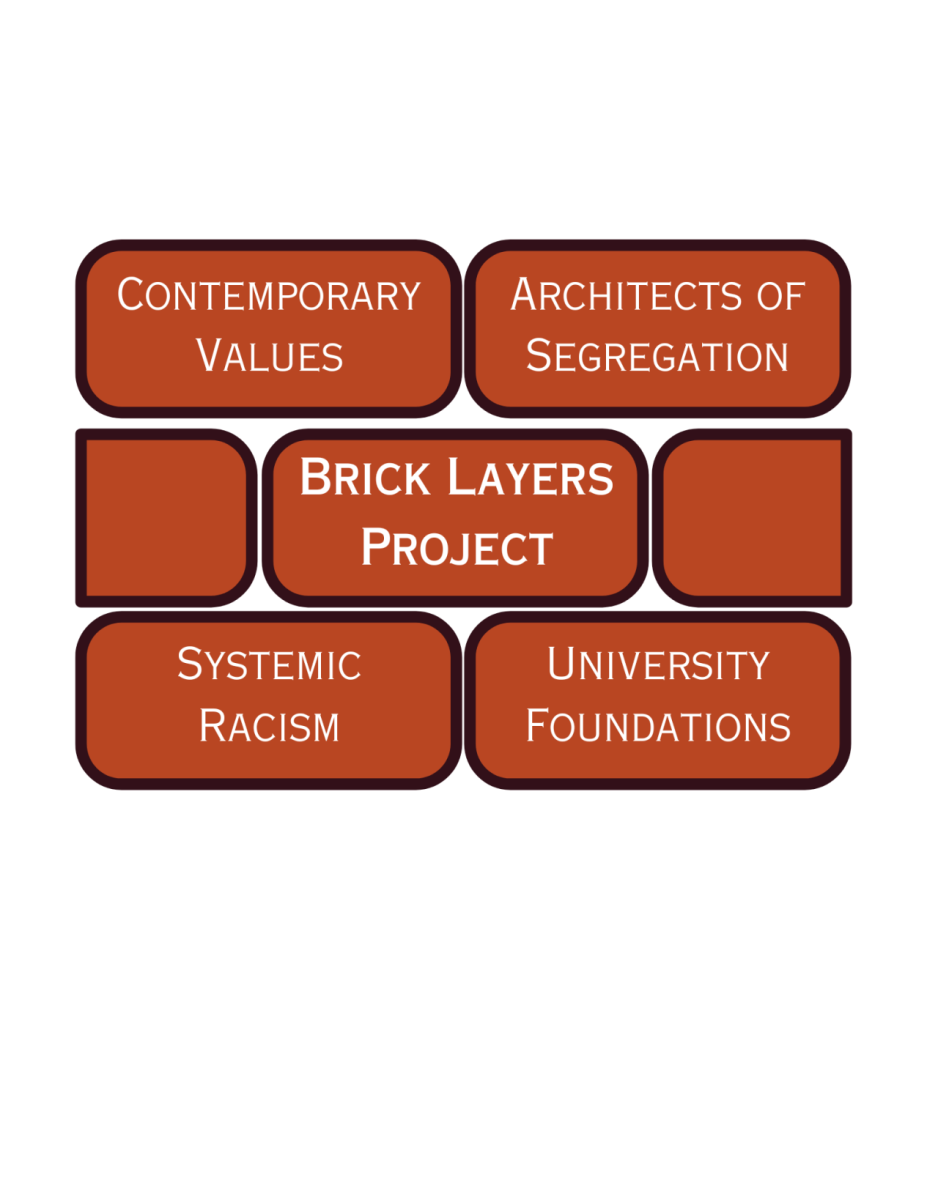Almost five years on from the initiation of the Brick Layers Project, its work and legacy remain unfulfilled.
In the spring of 2019, Chancellor Woodson funded several graduate students to work on a project exploring the campus’ built history for five semesters. The research publicized the reasons for the dedications of several individuals throughout campus, as well as the more nefarious sides of their biographies.
Tammy Gordon, a professor in the history department, headed up the work.
“A lot of buildings on our campus are named after people who weren’t just casual racists of the time,” Gordon said. “They were architects of segregation.”
The research was premised as a social history project, meaning that it sought to explore all aspects of these individuals’ lives and their implications: the good, the bad, the gray areas and everything in between.
“We’re going to look at the things that social historians look at, which include power relations,” Gordon said. “Our job as historians is to highlight the complexity.”
David Zonderman, who was head of the Department of History at the time and part of the advisory team for the project, supported this sentiment.
“I believe, and particularly as a public historian, that history ought to be acknowledged and ought to be explained to people today,” Zonderman said. “It’s not something that we should hide. It’s not something we should avoid talking about. We should talk about it because then it opens up a whole bunch of other conversations.”
This approach drew questions from administration. Though the content of the work was never challenged or undermined, administrators raised concerns of how it was initially presented.
“They were concerned that the project was too one-sided, and we tried to address those concerns by emphasizing that we had proposed a social history project,” Gordon said. “They were concerned that it showed too much of what we would consider negative today.”
To these negative elements, Zonderman agreed with the necessity of a historian’s perspective.
“Well, of course we have to talk about that — it would be professional malpractice to ignore it,” Zonderman said.
Even after the editorial and publication process, this sentiment of hesitancy persisted.
“I think when we got to the next potential stage, like, ‘What do we do with this?’ the conversations became a bit more challenging,” Zonderman said. “[Administration representatives] became a little more circumspect, reluctant.”
Zonderman, who has served as the chair of university faculty and felt more familiar with the administrative process, said he understood the complexity of the situation and how tangled bureaucracy — especially in a public university — can become. He said he felt this was a driving element of the reservations.
“I’ve learned enough to read a room and sort of read between the lines of what people say, and even if they weren’t verbalized, there are real life constraints,” Zonderman said.
That said, he said he felt another element was at play.
“I’ve been here long enough to know that when people upstairs really want something done, it gets done,” Zonderman said. “But when people don’t really want to do something, or are still trying to figure out what to do with something, it can either stop moving at all; it can move glacially slowly; it can get sort of the legislative equivalent of sent to a committee, where it just kind of dies.”
Gordon pointed to the University Archives and Special Collections as rich resources, both for the project and the general University community. University Archivist Todd Kosmerick, who offered research assistance to the project, was similarly pessimistic about the applications of the project.
“There hadn’t been a history of really addressing this issue before,” Kosmerick said. “I wasn’t sure that the University was prepared to do more than just the information that was disseminated.”
Gordon and Zonderman both said they had extensive ideas for how to proceed with the findings of the project. Zonderman advocated for more public exposure and a launch event for the project’s findings. Gordon said the University hiring a designated NC State historian could facilitate a wider conversation and more practical actions. Provisions like extensive and educational signage for buildings and campus-wide forums were also discussed.
But none of these ideas came to fruition. Despite the varied options for handling what is a glaringly apparent issue physically inscribed into our campus, the University has so far opted for the worst next step: doing nothing.
This inaction raises several questions about the reception of the research. It places the University in a complex environment — the clear-cut findings of the Brick Layers Project aren’t complex, but the ways we deal with our direct link to the history of white supremacy are.
“All of these people were working toward segregation; they were building it,” Gordon said. “So when we talk today about systemic racism, who built the system?”
Gordon said the dialogue around the subject is still complex because of the legacy of the systems.
The Brick Layers Project provided the foundation for a sincere discussion about the legacies of white supremacists on our campus. It was intended to provide policy makers with the tools to inform next decisions. Instead, it has remained dormant and seems to have become an inconvenient presence for our university. In retrospect, its initiation appears more symbolic than being rooted in practical intentions.














